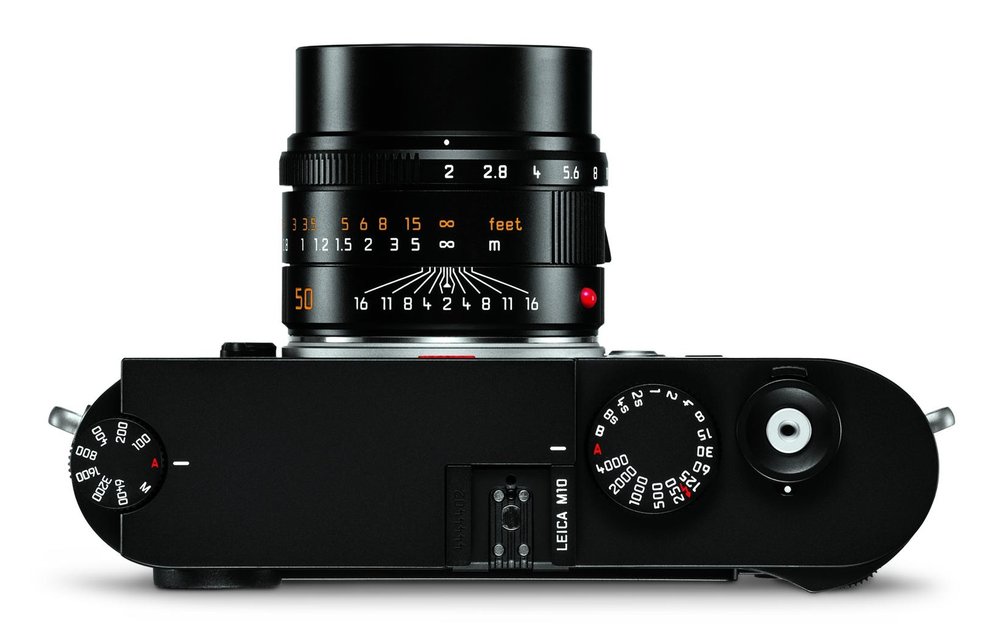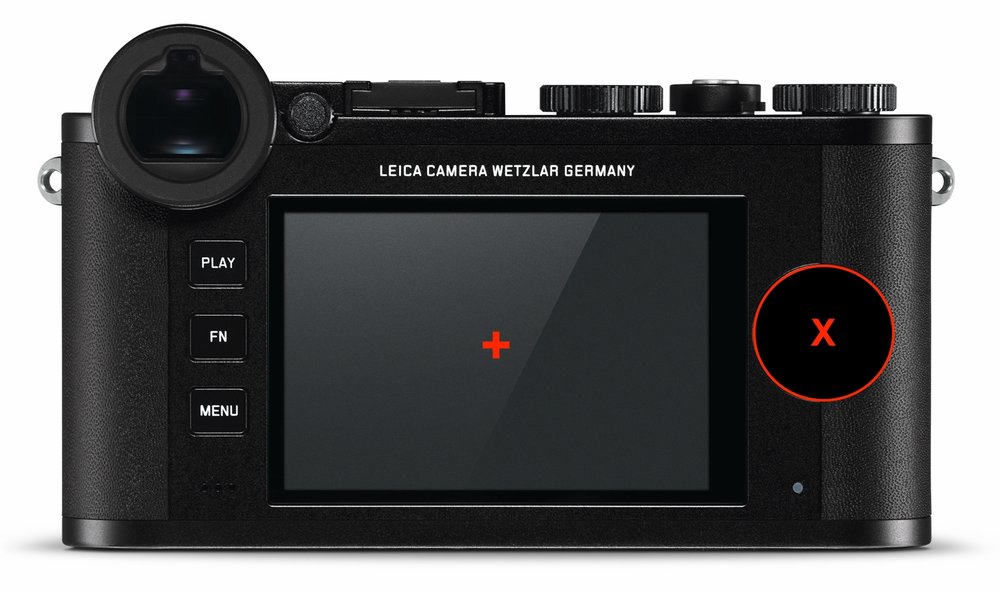
Leica today introduces extensive firmware updates for the M10, CL, TL2 and Q. The full press release is reproduced here. Two very useful updates immediately grabbed my attention:
- The M10 will now calculate an aperture value for adding to EXIF data. This is something that I remember happening before — I think with the M9 — but it is a welcome addition.
- The CL buttons can now be locked. This should overcome my major criticism of this CL. I’ve written at length about the problem of the D-pad randomly moving the focus point, making it difficult to work with a fixed central focus. I am delighted that Leica has listened to users. Earlier this year they updated the SL firmware in the same way, permitting the locking of the joystick. This is one of the first things I will be trying out and will report later on progress

Press Information
Free for release after: 29 June 2018, 3 p.m. (CEST)
Extensive updates for Leica Cameras: New firmware releases with numerous improvements and entirely new functions.
Wetzlar, 29 June 2018. Leica Camera AG has released a series of extensive firmware updates for the Leica M10, Leica Q, Leica CL, Leica TL2 and Leica T/TL camera models. Alongside further improvements of existing features, these updates also introduce a considerable number of new camera functions.
Leica M10 (v2.4.5.0)
- Optimisation of the delete menu: The graphic user interface for the deletion of pictures has been revised.
- Longer exposure times: Exposure times of up to four minutes are now possible at base ISO.
- New continuous shooting mode with lower frame rate: An additional continuous shooting mode is now available (Continuous Low Speed, three frames per second).
- ‘Load profile’ is now available in the favourites menu.
- Aperture value in EXIF data: The camera compares the brightness measured through the lens with the measured ambient brightness to estimate the aperture used. This value is then written to the EXIF data. In some cases, the interpretation of the subject or scene may lead to incorrect estimation of the aperture value, for instance when shooting subjects or scenes with high contrast and black or white objects.
- LED deactivation: The red LED on the back of the camera can now be deactivated in the control elements menu.
- Auto-ISO setting: Auto-ISO for base ISO is set to the default value of ISO 200 to optimise dynamic range.
Leica Q (v3.0)
-
Favourites Menu: Users can now enter and save up to 15 settings for faster access in a Favourites Menu.
-
Power Saving Mode: If required, the camera can now be set to switch to Stand-By Mode after 10 seconds.
-
Extended functions for the Fn button: Even more options can now be selected for programming the multi-function button.
-
User Profiles: Profiles can now be imported from and exported to a memory card.
-
OIS – optional ‘Auto’ setting: This setting enables automatic activation of optical
image stabilisation at shutter speeds of 1/60 s and slower.
-
EVF/LCD setting options: This menu item can now be assigned to the Fn button.
-
Settings for the electronic shutter: The electronic shutter can now be set to
permanently active.
-
DNG files: The processing speed of DNG files in the camera has been increased.
-
Autofocus fields: The last AF field used is now memorised and recalled when switching
the camera off and on again.
-
Self-timer: The setting is now memorised and recalled when switching the camera off
and on again.
-
Exposure preview deactivation option: Exposure preview can now be deactivated in
manual mode (especially useful when shooting in the studio with flash systems,
underexposed settings or in dark environments).
-
Image review: Automatic image review remains active as long as the shutter release
button is pressed.
Leica CL (v2.0)
- Programming of setting dial functions: The programming of the two setting dials can now be swapped from one to the other.
- Button lock: Pressing and holding the left-hand setting dial activates button lock (this does not lock the on/off switch, the shutter release or the left-hand setting dial).
- Power Saving Mode: If required, the camera can now be set to switch to Stand-By Mode after 10 seconds.
- Touchscreen autofocus: The AF metering points can now also be shifted with the joystick control in Touch AF mode when using the electronic viewfinder.
Leica TL2 (v1.4)
- Selection of LCD / viewfinder settings: It is now possible to select when and where the content is displayed (up until now, display was simultaneous).
- Customisable left function menu: The items of the left function menu can now be customised by the assignment of up to six of a total of thirteen functions.
- Extended functions for the Fn button: Now, one of a total of six different functions can be assigned to the Fn button.
- Settings for the electronic shutter: The electronic shutter can be deactivated, permanently activated or set to complement the mechanical shutter.
- Focus Peaking in AF Mode: Manual focus corrections can now be applied in AF Mode with the MF-ring. In the meantime, Focus Peaking is available from FW 1.4.
- Focus Peaking with M-/R-Lenses: Focus Peaking is now also available when using M- R-Lenses with the M-Adapter L.
- Exposure correction during video recording: The left-hand setting dial can now be used to apply exposure correction during video recording.
- Zoom-in when reviewing images in the EVF: The right-hand setting dial allows users to zoom in while viewing images in the EVF.
Leica T/TL (v1.8/v2.3)
-
Simpler connection between the camera and a smartphone by app
-
Reduction of chromatic aberration for all TL-Lenses
-
Support and auto-update for the Elmarit-TL 18 mm f/2.8 ASPH.
The firmware updates are available from the Leica website (https://www.leica-camera.com). Users can either download and install the update themselves or have it installed within the scope of the free update service offered in all Leica Stores.
_____________
- Subscribe to Macfilos for free updates on articles as they are published
- Want to comment on this article but having problems?

Well I’ve just spent a lot of time trying to update the firmware on my Q according to the instructions I downloaded from the Leica Camera website and it did not work. I am now told that the instructions in the download from the website are wrong !
Words fail me. How can they post instructions which are wrong? Perhaps they are spending too much time designing watches and not enough worrying about their cameras
Anyway I am told that the Leica Forum website does have the correct instructions but as the procedure if not followed correctly has the potential to completely screw the camera’s operating system I’ll let others validate the process before engaging with it. My Q works just fine-I don’t need to destroy its OS whilst trying to apply a firmware update of dubious benefit.
Meanwhile perhaps Leica could take a long hard look at themselves in the mirror.
Hello John, I would not worry too much for as long as you have a fully recharged battery and a ready formatted SD card and then follow the updating instructions to the letter I am sure you will find Leica firmware updating quite straightforward and easy, the bigger question in my view is will the cameras use actually be improved once you have done it?
I am not able to advise you about this for the Q as I do not own one, however if such as my experience after updating my CL is anything to go by I would certainly recommend caution and waiting until you have heard more about other Q users updating experiences before updating yourself for if it is anything like the CL’s disastrous latest firmware please do not update for now unless the new firmware is also reversible. Best wishes with it. Don
The results from a CL with any of the T,TL,CL lenses are potentially stunning if the photographer gets it right, but Leica seem determined to make getting it right needlessly harder and hence in my view at least the downloading of the latest firmware far from improving matters has made THE most frustrating camer I have ever used even more frustrating than it already was. Come on Leica what are you playing at? Don Morley.
Re the new CL locking system, it is a pity that the focus point can’t be locked without locking all the wheels and buttons as well. I am not sure when I would want to have all the buttons locked.
Keith, I have just updated (see my reply to Don Morley) and I find it inexplicable that the lock function also prevents basic camera adjustments — aperture/speed, mode and exposure compensation. I need to test this more fully, but on first inspection, I really do not know what they are thinking of.
Mike, it appears to lock the CL into a point-and-shoot mode with no user input possible. In my quick testing it adjusted either the shutter speed or the Auto ISO to get the right exposure, with the aperture fixed to the value set on entering lock mode. It behaved like this for P, A, S and Auto. For M it seemed to lock both aperture and shutter speed and change the ISO when possible.
Maybe someone out there can or will prove me wrong, but as far as I can see the new CL lock setting system is fataly flawed as certaunly on mine does not memorise the setting, so it unlocks itself each time I switch the camera off and then on again meaning I thus also have to remember to re lock it and I know I will forget. How is it working or not working with yours?
Sorry Don, I haven’t installed any of the firmware yet. I will check this out when I have had a play.
Don. I have now installed the firmware and agree with you that the lock setting is released when the camera is switched off. But I have also noticed that it is not only the pesky four-way pad that is locked when Lock mode is selected — it also prevents aperture or shutter speed adjustment, exposure compensation and mode selection. Or am I missing something.
If this is the case, the update is worse than useless and I really do not understand the logic behind this. The only problem, as far as I could see, was that four-way pad which constantly moved the focus point. Now they seem to have made matters worse.
One wonders if the software people even use these cameras…
These really seem to show that Leica is (surprisingly!) listening to its customer base.
On the M10, the ability to report aperture, the base auto-ISO setting and the long exposure limits have long been minor annoyances on an otherwise excellent camera. The ability to disable the LED looks very much like a leaf from Ricoh’s GR book, although bizarrely it only disables the LED while the SD card is being written – it still flashes when you turn the camera on or off. Gaffer tape still beats software…